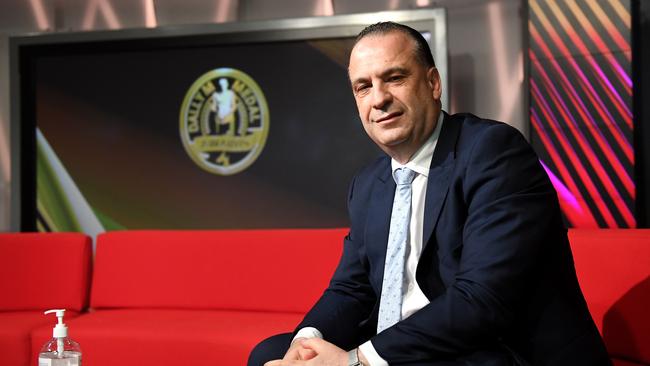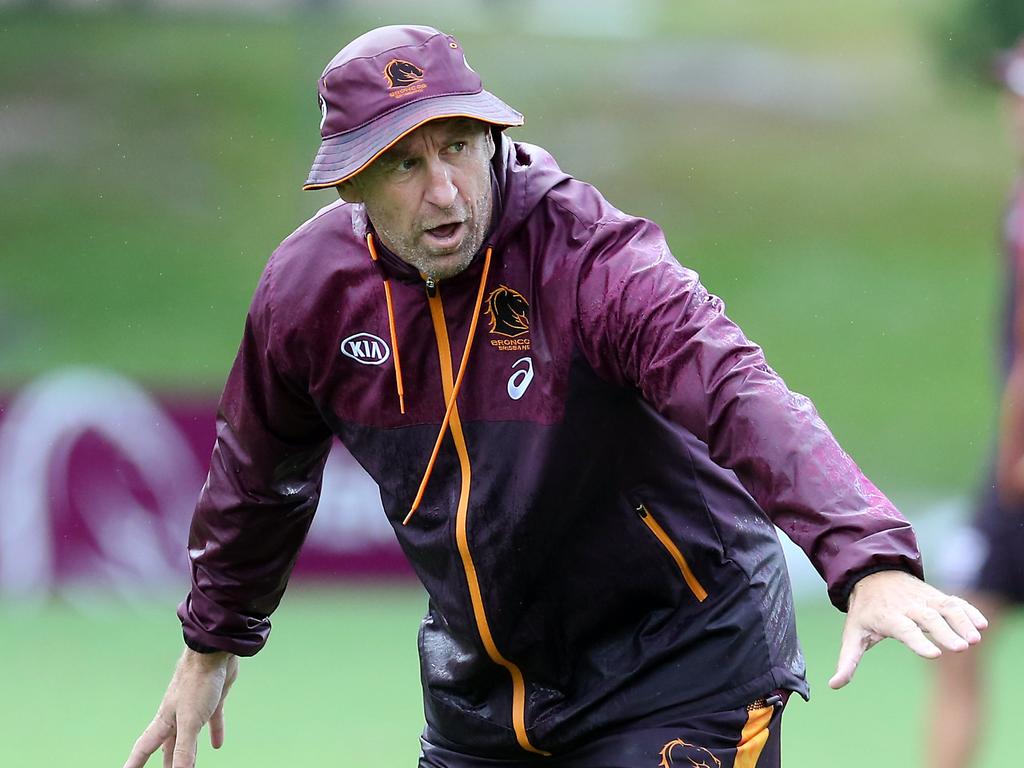Covid cost AFL and NRL hundreds of millions, financial accounts reveal
Both the AFL and NRL came through the pandemic better than they had feared. But COVID still cost both codes big money in 2020.

COVID-19 cost the two biggest football codes more than $250m in revenue, caused more than $100m in operating losses and the spending of previously accumulated savings and had them receive $45m in Jobkeeper revenue to survive 2020.
Both the AFL and NRL have trumpeted better than expected fiscal results for last year this week, but a fuller examination of their financial performance shows the big cost the pandemic wrought.
The NRL on Friday revealed a $24.7m deficit for its 2020 financial year, which did not include the State of Origin series played at the end of the season. The league said if the three-game series was included in its results it would have recorded just a $3.7m deficit for 2020.
ARL Commission chairman Peter V’landys lauded the result, which compared to an underlying loss of $22.7m for the AFL and came after the NRL managed to reduce its operating expenses by a whopping 32 per cent.
“The game faced financial catastrophe when we were forced to suspend the season in March. I’m pleased to report that because we were able to resume the season so quickly and renegotiate new deals with our partners, the game finished the financial year in much stronger shape than first predicted,” V’landys said.
“We’ve recorded a modest deficit and had State of Origin been played in the 2020 financial year we would have been close to breaking even.”
But there is some devil in the detail for both of the biggest football codes, with some interesting information emerging – or being hidden – when it comes to the contentious matter of broadcast deals.
V’landys was hailed last year when rugby league became the first football code to get back on the field, and crucially on television screens, in May. After heated talks, the NRL chairman was able to recast broadcast deals with Nine Entertainment and Fox Sports.
The AFL would later follow suit, but V’landys has been coy about revealing exact details of the discount that Nine and Fox were able to negotiate. That extended to Friday, when the concise financial report uploaded on the NRL website did not break down its broadcast income for the first time in recent memory.
It has been estimated that the NRL could be forgoing $150m in broadcast revenue over three seasons.
Meanwhile, the AFL’s financial report lodged with the Australian Securities and Investments Commission on Thursday night showed its broadcast revenue dropped by $45m from the $397m it received in 2019, after chief executive Gillon McLachlan agreed to revamped deals with Seven West Media and Foxtel.

McLachlan also managed late in 2020 to strike extensions with Seven and Foxtel through 2023 and 2024, and the AFL’s latest accounts show how lucrative those deals will be in what is otherwise a tough market.
“The new extended broadcast deal … will deliver $946 million to the AFL industry over the two years,” a note in the accounts says.
While the AFL will have reduced deals this year and 2022, the new contracts mean it averages $473m in broadcast revenue in 2023 and 2024. For context, that compares to the $353m it got from its television partners in 2020 and is more than the NRL’s entire $419m revenue last year.
While the AFL said it came through 2020 in much better financial health than it had feared – it had organised a $660m line of credit with NAB and ANZ when the pandemic halted the competition in March – there was still some big costs.
The league spent a huge $60m from its savings fund to “mitigate losses throughout the AFL industry” and its borrowings went up about $100m to $190m, including the recognition of lease liabilities and the drawing down of loan facilities to help various clubs.
Its AFL Stadia subsidiary, which owns Marvel Stadium in Melbourne’s Docklands, posted an $18m loss for the year, and the AFL’s results included $33m it received from the Federal Government’s JobKeeper program and there was also $14m from the Victorian government for a future Marvel Stadium redevelopment. It also spent about $60m on measures such as the Queensland hubs for the competition in the second half of the year.
The NRL’s results revealed it received $11.5m in JobKeeper payments and revenue fell by about 25 per cent or more than $130m.
It did reduce expenses by 32 per cent despite significant spending on COVID protocols and team travel.
V’landys also took a shot at his competitors when detailing the NRL’s increasing net payments to its clubs by 300 per cent to ensure their viability.
“This is in stark contrast to other sports, which either reduced funding to their clubs or maintained the same level of funding in their clubs’ time of need given the disastrous impact of COVID-19 on their other sources of revenue,” he said.







